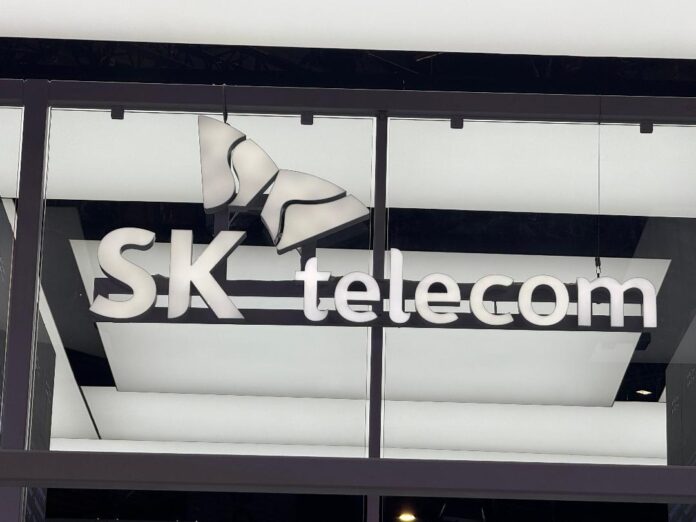SK Telecom noted its 5G subscribers accounted for 77% of the telco’s overall handset subscribers in the second quarter of the year
In sum – what to know:
5G subscribers reached 17M despite breach – SK Telecom saw a 4.9% y-o-y increase in 5G users, even after losing 220,000 subscribers due to a recent cybersecurity incident.
AI revenue climbs, net profit plunges – While total AI business grew 13.9% y-o-y, SK Telecom’s net profit dropped 76.2% in Q2 amid rising capex and falling overall revenue.
AI infra push continues with AWS – A new AWS-backed AI data center in Ulsan is set to go live in 2027, aiming to push SKT’s data center capacity beyond 300 MW.
SK Telecom, South Korea’s largest telecom operator, ended the second quarter of the year with a total of 17 million subscribers in the 5G segment, up 4.9% from 16.2 million in the same period the previous year, the carrier said in its earnings statement.
During the second quarter of the year, the Korean operator lost nearly 220.000 5G subscribers due to a recent cybersecurity incident that affected the telco’s operations.
At the end of June, SK Telecom’s 5G subscribers accounted for 77% of its overall handset subscribers, up from 71% at the end of Q2 2024.
The number of LTE subscriber reached 5.08 million at the end of the second quarter, down 23% year-on-year. The Korean carrier ended Q2 with a total of 33.4 million mobile subscribers, down 2.3% year-on-year.
SK Telecom reported its operating profit decline 37.1% year-on-year to KRW338 billion ($244 million) in Q2, with revenues down 1.9% to KRW4.34 trillion.
Net profit for the period decreased by 76.2% to KRW83 billion, while the telco’s capex in Q2 reached KRW635 billion, up 63.6% year-on-year.
SK Telecom’s artificial intelligence (AI) business grew 13.9% year-over-year in Q2. The AI data center (AIDC) business posted revenue of KRW 108.7 billion, up 13.3% from the same period last year, driven by improved utilization, the telco said. The AI Transformation (AIX) business grew 15.3% to KRW 46.8 billion in revenue, bolstered by expanding B2B solutions sales.
“In June, SK Telecom announced a joint plan with Amazon Web Services (AWS) and SK Group affiliates to build a data center in Ulsan, South Korea for a new AWS AI Zone. The Ulsan AIDC, set to begin operations in 2027, will leverage SK Groups’ capabilities and serve as a key hub in the ‘AI Infrastructure Superhighway,’ SK Telecom’s plan for establishing AI infrastructure to become an AI hub in Asia Pacific region,” the telco said.
Once in operation, the Ulsan AIDC, in conjunction with the Guro DC in Seoul, will bring SK Telecom’s total data center capacity to over 300 MW. SK Telecom expects to achieve an annual revenue of more than KRW 1 trillion from AIDC business by 2030.
SK Telecom has recently launched a sovereign GPU-as-a-Service (GPUaaS) platform built on more than 1,000 Nvidia B200 GPUs — one of the largest clusters in South Korea.
This new GPUaaS infrastructure, branded ‘Haein’, offers top-tier computing performance and is a successor to the company’s previous H100-based offering introduced in late 2024.
The system has been selected by Korea’s Ministry of Science and ICT to support its “Proprietary AI Foundation Model” program, which aims to develop globally competitive national AI models and foster the domestic AI ecosystem.
The Asian telco noted that the infrastructure will be housed in SK Telecom’s Gasan AI data center (AIDC). The deployment includes partnerships with Penguin Solutions and Supermicro for system integration and AI server procurement, it added.
By utilizing its in-house virtualization solution, ‘Petasus AI Cloud,’ SK Telecom said it can instantly partition and reconfigure the GPU cluster according to customer needs, maximizing utilization. In addition, the company provides the ‘AI Cloud Manager,’ an AIOps (AI for IT Operations) platform that efficiently manages the entire AI service lifecycle — from development and training to deployment. This platform, backed by extensive expertise in large-scale model development, enhances user work efficiency and development convenience, according to the Asian carrier.

